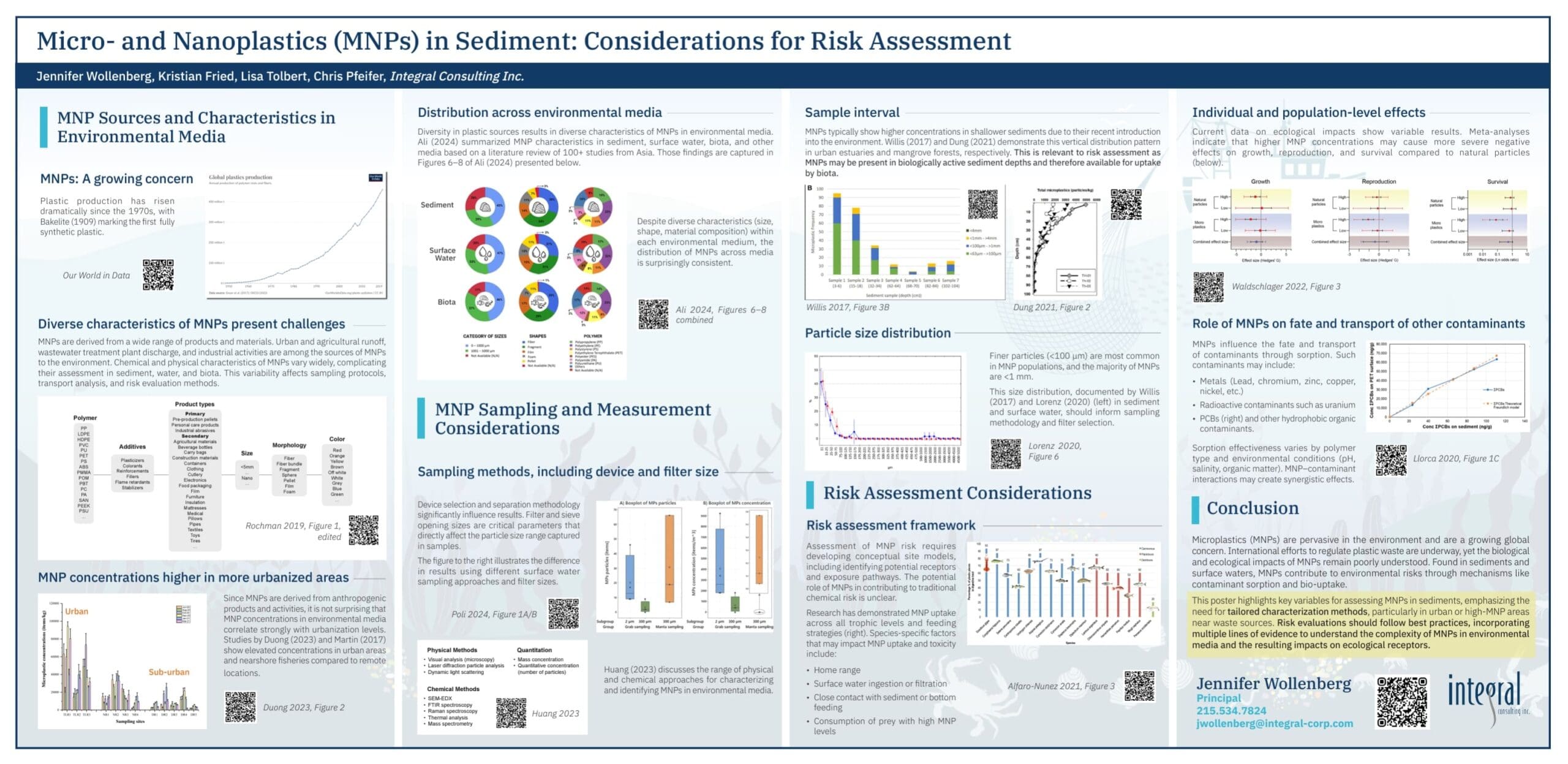
Mr. Chris Pfeifer is a multidisciplinary environmental scientist with nearly 30 years of consulting experience focused on wetland science, natural resource damage assessment (NRDA), ecological restoration, oil spill environmental response, and ecological risk assessment. He also has broad experience in project, program, and client management. He has responded to more than 50 pipeline, vessel, and facility pollution incidents and worked on dozens of NRDA cases throughout the country under both the Oil Pollution Act and CERCLA. He has applied ecological risk concepts to evaluate natural resource injuries and used habitat equivalency analysis (HEA) and resource equivalency analysis (REA) to quantify changes in ecological services and scale compensatory restoration. Mr. Pfeifer has also conducted screening-level ecological risk assessments (SLERAs) for a variety of contaminated sites and spill locations addressing hazards from hydrocarbons, PCBs, metals, dioxins, and pesticides. He applies his experience restoring, creating, and enhancing wetland, aquatic, riparian, and upland habitats working in regulatory settings to mitigate impacts from land development and restore natural resources injured by pollution. He also engages in non-regulatory projects such as living shorelines to address coastal erosion and bolster resilience. Prior to his work in consulting, Mr. Pfeifer supported aquatic resource and water quality protection and planning programs in state and federal government.
M.S., Environmental Science and Engineering, University of North Carolina, Chapel Hill, North Carolina, 1994
B.A., Physical Geography/Biology, University of Delaware, Newark, Delaware, 1991
Hazardous Waste Operations and Emergency Response 40‑Hour Certification (1995; 8‑Hour Annual Refreshers 1996–2023)
First Aid and CPR Certified (2023)
Delaware Living Shorelines Committee
Phi Beta Kappa
Chris Pfeifer Senior Consultant
Mr. Chris Pfeifer is a multidisciplinary environmental scientist with nearly 30 years of consulting experience focused on wetland science, natural resource damage assessment (NRDA), ecological restoration, oil spill environmental response, and ecological risk assessment. He also has broad experience in project, program, and client management. He has responded to more than 50 pipeline, vessel, and facility pollution incidents and worked on dozens of NRDA cases throughout the country under both the Oil Pollution Act and CERCLA. He has applied ecological risk concepts to evaluate natural resource injuries and used habitat equivalency analysis (HEA) and resource equivalency analysis (REA) ...
Mr. Chris Pfeifer is a multidisciplinary environmental scientist with nearly 30 years of consulting experience focused on wetland science, natural resource damage assessment (NRDA), ecological restoration, oil spill environmental response, and ecological risk assessment. He also has broad experience in project, program, and client management. He has responded to more than 50 pipeline, vessel, and facility pollution incidents and worked on dozens of NRDA cases throughout the country under both the Oil Pollution Act and CERCLA. He has applied ecological risk concepts to evaluate natural resource injuries and used habitat equivalency analysis (HEA) and resource equivalency analysis (REA) to quantify changes in ecological services and scale compensatory restoration. Mr. Pfeifer has also conducted screening-level ecological risk assessments (SLERAs) for a variety of contaminated sites and spill locations addressing hazards from hydrocarbons, PCBs, metals, dioxins, and pesticides. He applies his experience restoring, creating, and enhancing wetland, aquatic, riparian, and upland habitats working in regulatory settings to mitigate impacts from land development and restore natural resources injured by pollution. He also engages in non-regulatory projects such as living shorelines to address coastal erosion and bolster resilience. Prior to his work in consulting, Mr. Pfeifer supported aquatic resource and water quality protection and planning programs in state and federal government.

U.S. Department of the Interior Proposes Revisions to NRDA Regulation Type A Rule
Resource
January 10 2024- Ecological Risk Assessment
- Coastal Resilience
- Ecological Restoration
- Natural Resource Damage Assessment

